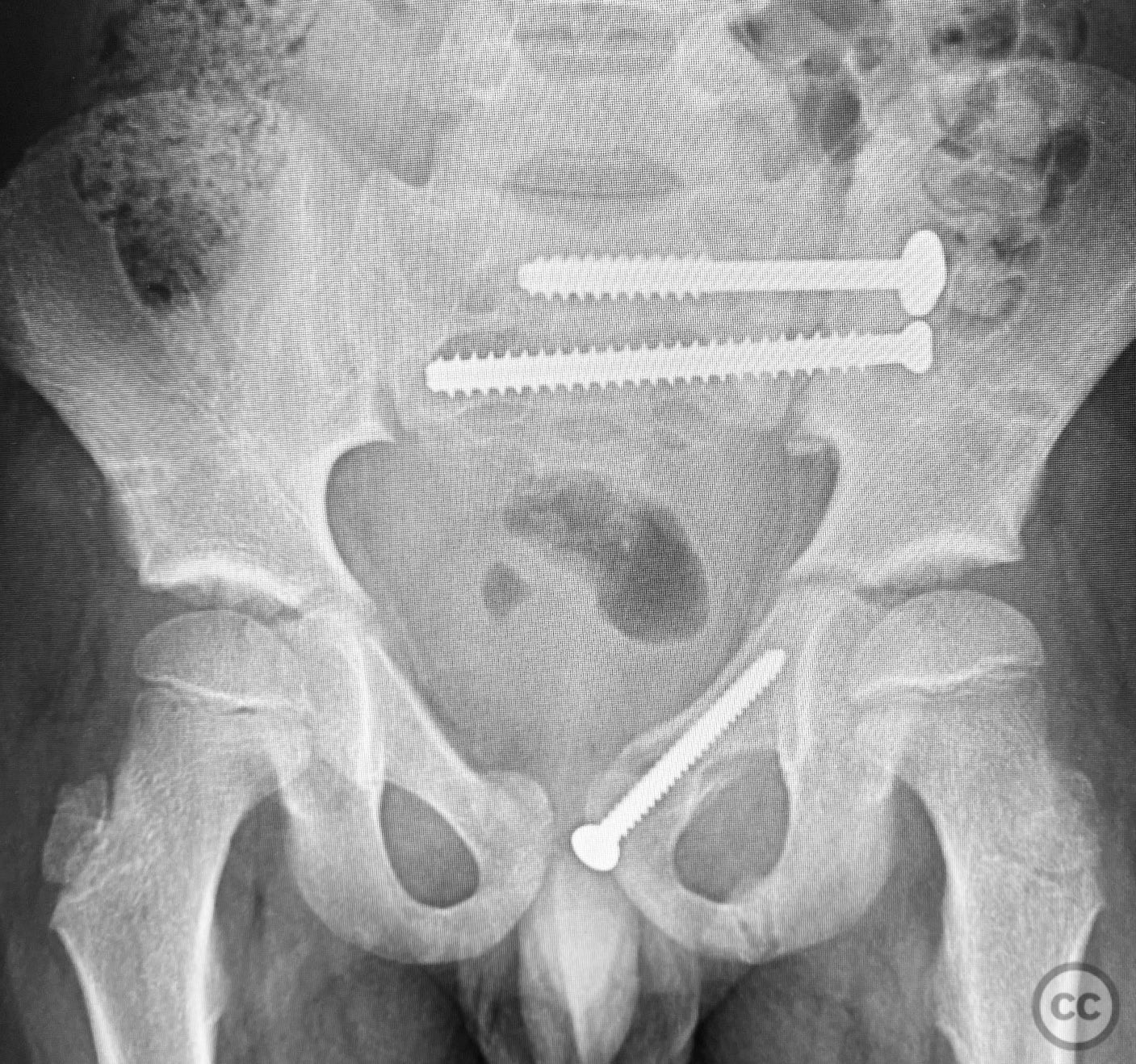Unstable Pediatric Pelvic Ring Injury Treated with CRPF
Score and Comment on this Case
Clinical Details
Clinical and radiological findings: A 7-year-old male sustained a crush injury resulting in an unstable pelvic ring injury. Initial clinical assessment revealed no neurovascular compromise. Radiographs demonstrated a displaced fracture involving the superior pubic ramus and a posterior pelvic ring injury, consistent with an AO/OTA 61-C1 classification. No open wounds or associated visceral injuries were reported.
Preoperative Plan
Planning remarks: The preoperative plan was for closed reduction and percutaneous fixation (CRPF) of both the anterior and posterior pelvic ring injuries. Planned fixation included percutaneous screw fixation of the superior pubic ramus and posterior ring.
Surgical Discussion
Patient positioning: The patient was positioned supine on a radiolucent table to facilitate fluoroscopic imaging in multiple planes.
Anatomical surgical approach: Percutaneous approach to the superior pubic ramus under fluoroscopic guidance, with a small stab incision over the entry point at the pubic tubercle. For the posterior ring, a percutaneous approach was utilized, targeting the sacroiliac region for cannulated screw placement under fluoroscopic control.
Operative remarks:Closed reduction was achieved under fluoroscopic guidance, with satisfactory alignment of both anterior and posterior elements. A 4.5mm cortical screw was placed percutaneously across the superior pubic ramus fracture, and a 7mm cannulated cancellous screw was inserted across the posterior pelvic ring injury. No intraoperative complications were encountered. Implant removal was performed 10 months postoperatively without incident.
Postoperative protocol: Early mobilization was encouraged with protected weight bearing for 6 weeks, followed by progression to full weight bearing as tolerated. No bracing was utilized.
Follow up: At 15 years of age, the patient is completely asymptomatic, fully functional, and participates in high school soccer without limitation.
Orthopaedic implants used: 4.5mm cortical screw (superior pubic ramus), 7mm cannulated cancellous screw (posterior pelvic ring).
Search for Related Literature
Industry Sponsership
contact us for advertising opportunities




Article viewed 49 times
12 Sep 2025
Add to Bookmarks
Full Citation
Cite this article:
Routt, ML. (2025). Unstable Pediatric Pelvic Ring Injury Treated with CRPF. Journal of Orthopaedic Surgery and Traumatology. Case Report 38547858 Published Online Sep 12 2025.